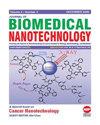Shikonin Inhibits Vascular Extravasation and Inflammation in Burn Wounds by Regulating Wnt/β-Catenin Pathway
IF 2.9
4区 医学
Q1 Medicine
引用次数: 0
Abstract
Objective: To explore whether shikonin can alleviate vascular leakage in burn wounds, inhibit skin inflammation, and exert protective effects on skin. Methods: A mouse skin burn wound model was routinely established, and fluorescent microspheres were injected through the tail vein 2 h before sampling to characterize the degree of vascular leakage. Dorsal skin was obtained by surgical dissection and embedded in OCT, and frozen sections were prepared. CD31 immunofluorescence was used to determine the distribution of blood vessels in burnt skin, and Ly6G immunofluorescence staining was used to determine the level of neutrophil recruitment in the skin. Results: Skin microvessels were mainly distributed in the dermis. We found that severe vascular leakage occurred in the blood vessels of the burned dermis, and shikonin significantly alleviated vascular leakage in the burned area. Furthermore, shikonin significantly inhibited neutrophil recruitment to burn sites. Most importantly, we also found that shikonin can alleviate vascular leakage and inhibit skin inflammation at burn sites through the Wnt/β-catenin signaling pathway. Conclusion: Shikonin can alleviate vascular leakage, and inhibit skin inflammation in burn wounds through the Wnt/β-catenin signaling pathway. This experimental study provides a proof-of-concept and a new avenue for the repair and treatment of burn skin vascular injuries.志贺宁通过调节 Wnt/β-Catenin 通路抑制烧伤伤口的血管外渗和炎症反应
目的探讨志贺宁是否能缓解烧伤创面的血管渗漏、抑制皮肤炎症并发挥保护皮肤的作用。方法常规建立小鼠烧伤创面模型,在取样前 2 小时通过尾静脉注射荧光微球,以确定血管渗漏的程度。通过手术剥离获取背侧皮肤,嵌入 OCT 并制备冷冻切片。CD31 免疫荧光用于确定烧伤皮肤中血管的分布,Ly6G 免疫荧光染色用于确定皮肤中性粒细胞的招募水平。结果显示皮肤微血管主要分布在真皮层。我们发现烧伤的真皮层血管发生了严重的血管渗漏,而紫杉素能显著缓解烧伤区域的血管渗漏。此外,志贺宁还能明显抑制嗜中性粒细胞向烧伤部位聚集。最重要的是,我们还发现志贺宁可以通过 Wnt/β-catenin 信号通路缓解烧伤部位的血管渗漏并抑制皮肤炎症。结论志贺宁可通过 Wnt/β-catenin 信号通路缓解烧伤创面的血管渗漏并抑制皮肤炎症。这项实验研究为烧伤皮肤血管损伤的修复和治疗提供了概念验证和新途径。
本文章由计算机程序翻译,如有差异,请以英文原文为准。
求助全文
约1分钟内获得全文
求助全文
来源期刊
CiteScore
4.30
自引率
17.20%
发文量
145
审稿时长
2.3 months
期刊介绍:
Information not localized

 求助内容:
求助内容: 应助结果提醒方式:
应助结果提醒方式:


